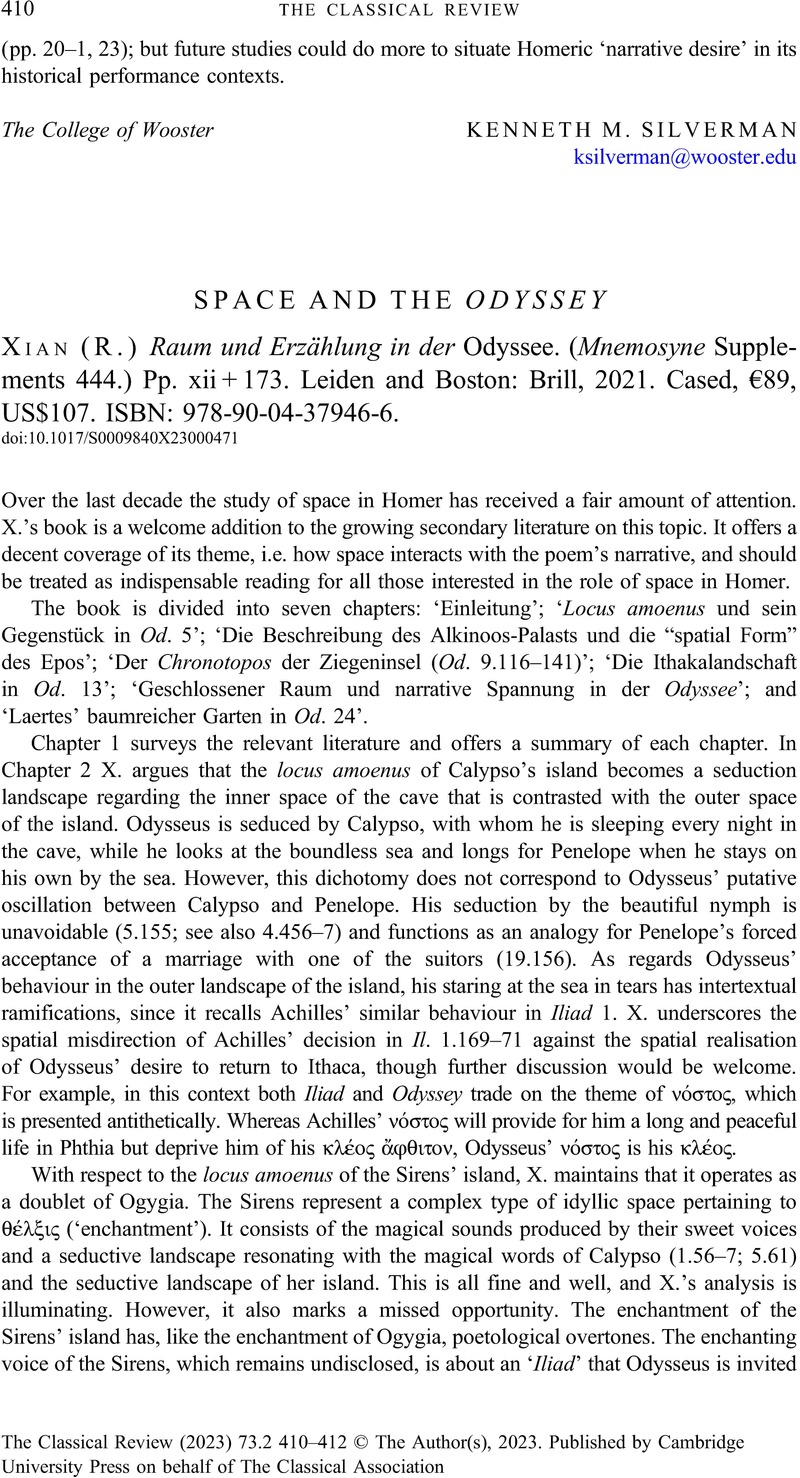No CrossRef data available.
Article contents
SPACE AND THE ODYSSEY - (R.) Xian Raum und Erzählung in der Odyssee. (Mnemosyne Supplements 444.) Pp. xii + 173. Leiden and Boston: Brill, 2021. Cased, €89, US$107. ISBN: 978-90-04-37946-6.
Review products
(R.) Xian Raum und Erzählung in der Odyssee. (Mnemosyne Supplements 444.) Pp. xii + 173. Leiden and Boston: Brill, 2021. Cased, €89, US$107. ISBN: 978-90-04-37946-6.
Published online by Cambridge University Press: 24 April 2023
Abstract
An abstract is not available for this content so a preview has been provided. Please use the Get access link above for information on how to access this content.

- Type
- Reviews
- Information
- Copyright
- Copyright © The Author(s), 2023. Published by Cambridge University Press on behalf of The Classical Association



